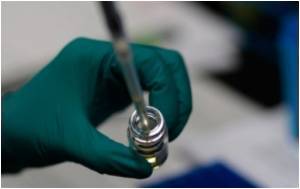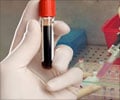A relatively simple electronic gadget that could speed up HIV/AIDS diagnostics and improve accuracy has now been developed.

Ali El Kateeb of the Electrical and Computer Engineering Department, at the University of Michigan, in Dearborn, explains that rapid blood tests for diagnosing HIV have become widely available but are prone to human error in reading the results. The currently available kits require a drop of blood placed in a well containing reactant test chemicals. A positive test produces a colored band perpendicular to a "control" bar that appears only if the test procedure was carried out correctly. El Kateeb points out that even such an apparently simple test must be carried out by a trained technician and in a clinic or laboratory.
Unfortunately, errors in reading the test pattern can occur and are particularly common in parts of the world where there is a dearth of qualified technicians. The result is that false positives that have a negative psychological effect on patients are common while false negatives mean patients thinking they are free of the virus will continue to infect others unwittingly.
Previously, El Kateeb had developed a static imaging device -, akin to a simple digital camera, that could be used to identify valid and positive test results using a built-in computer chip modified to run a dedicated pattern recognition program. The static approach was not entirely successful because it relies on precise manufacture of the test kit as well as accurate placement of the "eye" of the imaging device above the test kit. Now, El Kateeb has developed a "dynamic" version of the device that overcomes this significant drawback.
In the dynamic approach, the built-in software embedded on a Reconfigurable System-On-Chip, first determines the relative position of the detector's 384 × 288 pixel eye relative to the test kit well, illuminated by four LEDs, using a rapid analysis of pixel density in the captured image. The software then identifies the control bar and detects whether or not the perpendicular test bar is present regardless of their exact positioning within the well.
El Kateeb says this dynamic detection technique is 100% accurate in laboratory testing. The device is inexpensive, portable and self-contained and so could be made available to small clinics and pharmacies at low cost. Moreover, it requires no technician intervention, which will make it useful for rural areas in the developing world.
Advertisement
Source-Medindia
GPL












